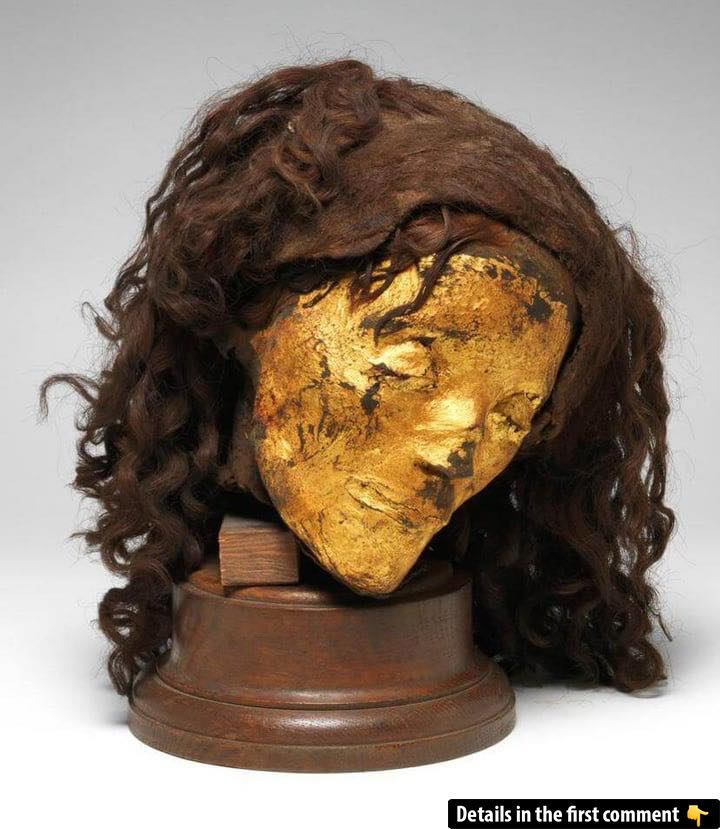In the heart of the Fitzwilliam Museum in Cambridge, a golden relic of Ancient Egypt silently tells its story: a mummy’s head, elegantly adorned with gilded skin and a human hair wig. This enigmatic artifact, discovered in Egypt and bequeathed by Major Robert Grenville ‘John’ Gayer-Anderson, raises more questions than answers. While much of this woman’s identity remains a mystery, the rich symbolism of her adornments offers insights into the culture, religion, and social structure of ancient Egypt. The gilded face on this mummy speaks to both the divine and mortal worlds, offering a unique lens into Egypt’s fascination with the afterlife.
The Golden Face: Symbolism and Significance
Gold in Ancient Egypt was far more than a symbol of wealth; it was intrinsically tied to the gods, the afterlife, and divine power. The Egyptians believed that gold was the flesh of the gods, particularly the Sun God Ra, who was often depicted with golden skin. Ra’s golden visage symbolized both immortality and the eternal nature of the sun, making gold a sacred material used to honor the gods and those chosen to be close to them. For the deceased, being adorned in gold was believed to grant divine protection and to aid in the journey to the afterlife.
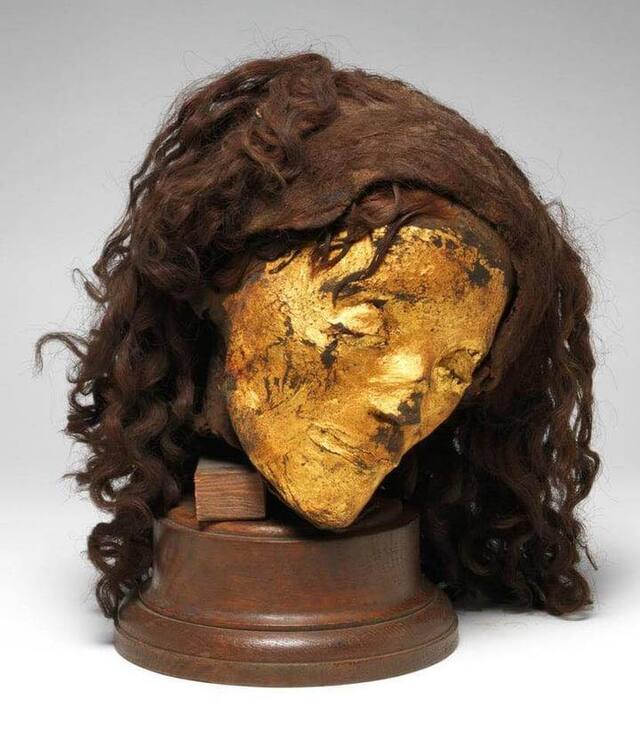
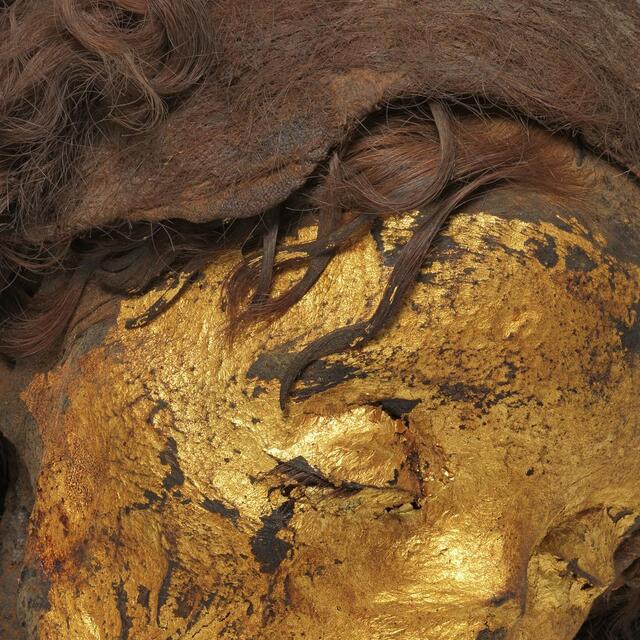
In this mummy’s case, the golden face wasn’t just a sign of wealth; it was a spiritual statement. The woman’s face, gilded with gold leaf, imitated the divine, making her akin to the gods, ensuring her immortality in the afterlife. This practice was particularly prevalent during the Late Period of Egypt, where mummification rituals were enriched with gold to mirror the celestial beings and give the deceased a chance at eternal life. The gold wasn’t merely for show—it was a critical part of their ritual to preserve both body and soul, ensuring that they could be reborn in the next world.

Video
Check out the video “The Field Revealed: Gilded Lady, The Mummy” – it’s a fascinating exploration of an ancient discovery!
The Gilded Skin: Religious and Cultural Context
In the afterlife, the physical body was as important as the spiritual journey it took. For the ancient Egyptians, the connection between the physical and the divine was embodied in the use of gold during mummification. This woman’s gilded skin suggests that she was a person of high social or religious standing. Gold, with its association to Ra and other deities, was used to recreate the divine appearance of the gods. Not only did it signify the deceased’s esteemed place in society, but it also reinforced their link to the divine.
The use of gold leaf in mummification, particularly in the facial region, also served a more pragmatic purpose—it was believed to protect the deceased from decay and to shield them from harm in the afterlife. The gold mask or gilded face was a physical manifestation of the divine protection that would accompany the deceased on their journey to the next world.
The Wig: A Symbol of Wealth and Status
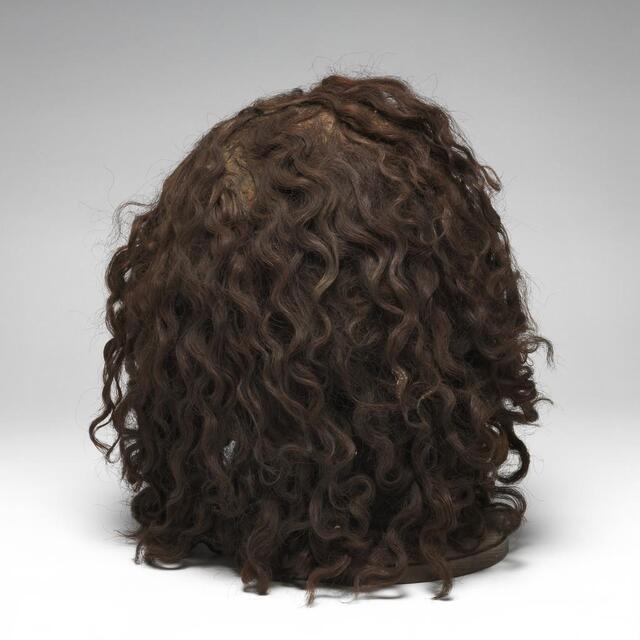
The woman’s wig, fashioned from human hair, is another significant detail that speaks to her wealth and status. In ancient Egypt, wigs were not merely cosmetic; they were a sign of social standing, wealth, and influence. Wigs, especially those made from human hair, were often worn by the elite to signify their higher rank in society. The wig also played a role in ensuring that the wearer’s appearance remained perfect and untarnished, even in death.
This wig, placed meticulously on the mummy’s head, further suggests that the woman was of high status—perhaps a noblewoman, a temple singer, or even a priestess. In ancient Egyptian culture, women of such rank were often involved in religious practices and rituals, making the gilded face and wig even more symbolic of their divine connection.
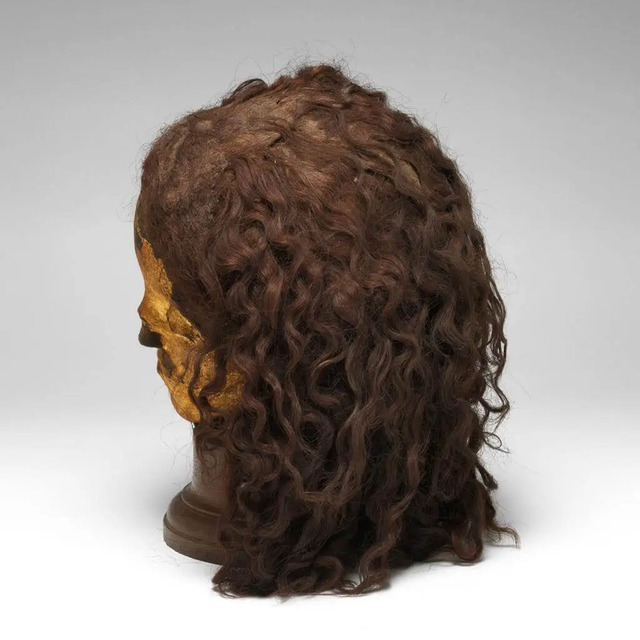
Who Was She? Theories on the Identity of the Woman
The lack of concrete information about this woman’s identity leaves much to speculation. However, her mummified head, adorned with gold and a carefully crafted wig, suggests she was someone of great importance. Given the elaborate mummification process and the use of gold, it’s likely that she belonged to the upper echelons of society, possibly related to religious or royal circles.
Theories about her identity range from her being a noblewoman to a priestess who served in one of Egypt’s many temples. Some have speculated that she could even have been the wife of a nobleman, given the luxurious nature of her burial attire. However, due to the limited remains and lack of direct historical records, her true identity may never be known. Nonetheless, the artifacts surrounding her provide a glimpse into the world she inhabited—a world where gold, wigs, and mummification were symbols of power, spirituality, and immortality.
The Importance of Gold in Egypt’s Economy and Culture
Gold was a cornerstone of Ancient Egypt’s economy, particularly in the regions of Nubia, where it was abundant. The Egyptians revered gold not just for its beauty but for its symbolic ties to their gods and the afterlife. Gold was used in various forms, from burial masks to jewelry, and even in the construction of temples and statues of gods. The abundance of gold helped Egypt thrive, both in terms of wealth and religious significance.
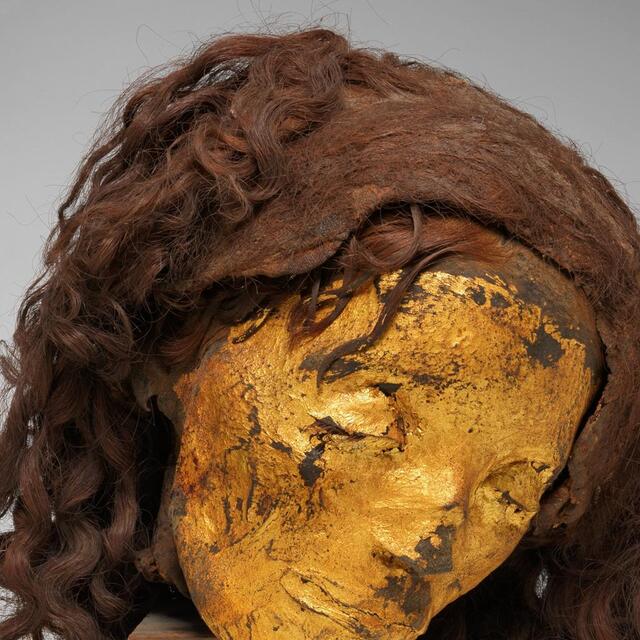
In the case of this mummy, the gold used in her burial highlights her connection to Egypt’s rich cultural and spiritual traditions. The fact that gold was so readily available in Egypt, particularly from Nubian sources, meant that the wealthy and powerful could adorn themselves and their loved ones with this divine metal. This woman’s gold face is a reminder of the profound belief in the afterlife and the lengths to which the Egyptians would go to ensure their eternal survival.
The Gilded Face and Its Connection to the Divine
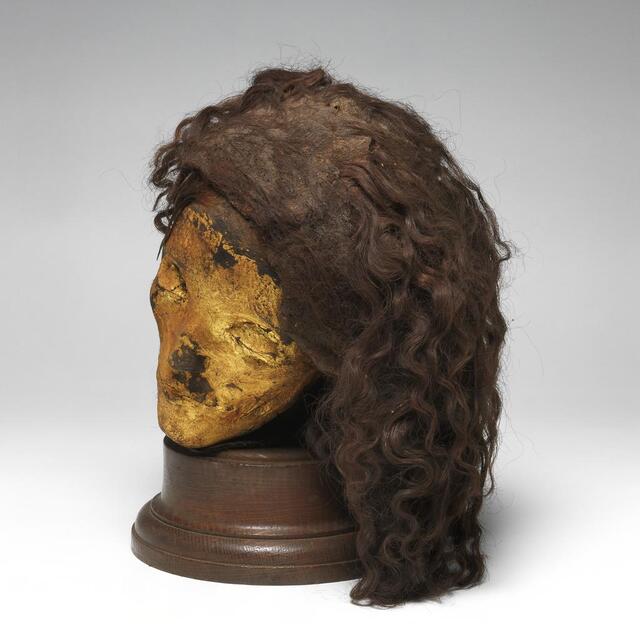
The act of adorning the face with gold was not a simple luxury—it was a deep religious act meant to connect the deceased to the gods. The Egyptians believed that the soul of the deceased would require a perfect, preserved body to enter the afterlife. The gilded face, then, was both a symbolic and protective gesture, ensuring the deceased was immortalized in the likeness of the divine.
The intricate mummification process, combined with the use of gold, transformed this woman from a mortal being into a divine entity in the afterlife. The gilded face served as a physical manifestation of this transformation, signaling her elevated status not only in life but also in death.
Video
Watch the video on Egyptian mummies discovered after being buried for more than 2,600 years – it’s an incredible find!
Conclusion: Unveiling Ancient Mysteries Through Artifacts
The discovery of this gilded mummy provides us with a rare glimpse into the culture, beliefs, and society of Ancient Egypt. Although we may never know the true identity of this woman, her mummified head speaks volumes about the spiritual and cultural practices of the time. The gold adorning her face, the wig upon her head, and the careful mummification process all point to a life of privilege, spirituality, and connection to the divine.
Through this artifact, we are reminded of the incredible richness of Ancient Egyptian civilization and the importance they placed on the afterlife. Gold, wigs, and intricate mummification were not just for the elite—they were tools to achieve immortality and to honor the gods. This mysterious woman, whose face is forever gilded in gold, continues to share her story with us, even as we remain captivated by the mysteries of Ancient Egypt.
